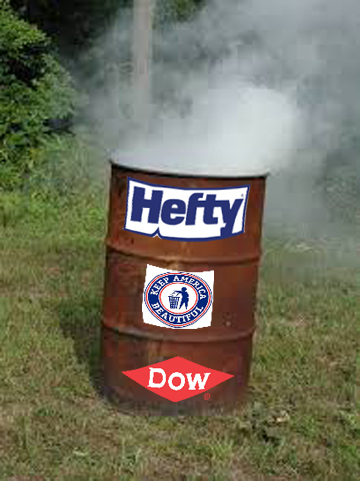Posts by jim
“Giving Day” is Only 3 Weeks Away
 THURSDAY, SEPTEMBER 14th
THURSDAY, SEPTEMBER 14th
8 am to 12 Midnight
DFW is our home office. We’re entirely local.
Giving Day provides us with a large part of our annual budget.
It’s a great chance to support local grassroots clean air work.
DFW is in its 26th year of continuous violation of the Clean Air Act.
This Giving Day, please consider a contribution of at least $26 to Downwinders at Risk.
Giving Day Pay Portal, active at 8 am on 9/14:
https://northtexasgivingday.org/npo/downwinders-at-risk-education-fund
Cowtown Redux for “21st Century Air Monitoring” Sept 7th
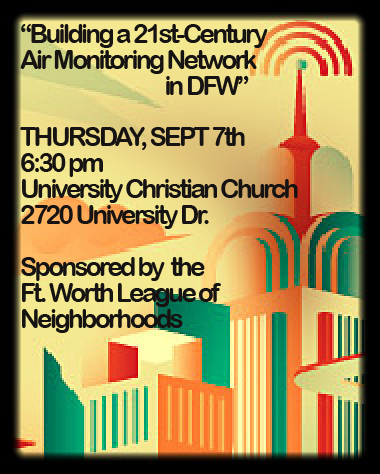 If you missed our “Science and Socializing” series of roll-out events for the DFW Air Research Consortium in June, you have a chance to catch the show again on Thursday September 7th when the Fort Worth League of Neighborhoods is using its September monthly meeting to host a repeat performance.
If you missed our “Science and Socializing” series of roll-out events for the DFW Air Research Consortium in June, you have a chance to catch the show again on Thursday September 7th when the Fort Worth League of Neighborhoods is using its September monthly meeting to host a repeat performance.
Dr. David Sterling and Graduate Assistant Leslie Allsop of UNT Health Science Center, as well as Downwinders at Risk Director Jim Schermbeck are the featured speakers.
In just a little over a year, the Air Research Consortium has grown in both size and ambition since being co-founded by Downwinders and local university professors to push the goal of a dense grid of sensors for DFW providing more detailed real time information on air quality than the status quo. At last count, the cities of Dallas, Fort Worth, and Plano had joined, along with UTD, TCU, UNT, UNTHSC, UTA, Liveable Arlington, and Mansfield Gas Awareness.
Although the group’s proposal to the National Science Foundation for funding a grid pilot project next year didn’t get selected over the summer, it did make it to the final round and give the members confidence in the idea. New sources of support for the grid are being explored, and more cities are adopting this more comprehensive approach to monitoring.
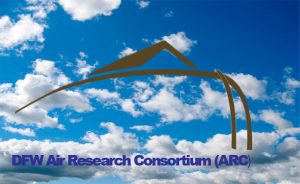
Meanwhile, two other Consortium projects are moving forward.
One is matching ten Particulate Matter and Ozone sensors with as many local public schools in Fort Worth, Dallas. Richardson and Plano. The other is Downwinders’ own Wise County Ozone Project, which commits two ozone monitors to a place no state ozone monitor has ever been.
Building the Consortium’s air monitoring grid has become a major goal of Downwinders because of its potential to give citizens a powerful new tool. Our on-going job is to figure out how best to integrate this new sensor technology into our traditional community organizing model to get change faster on the ground. We truly believe this new kind of air monitoring can change the way people “see” air pollution and how it impacts their lives.
But don’t take our word for it. Come see the presentation on the 7th and decide for yourself.
Meet Our New Scientist
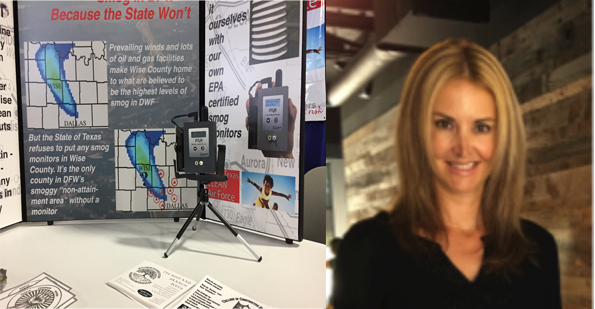 Downwinders’ Wise County Ozone Project Gets A Director
Downwinders’ Wise County Ozone Project Gets A Director
Downwinders at Risk is proud to announce Kari Northeim, a doctoral student in Environmental Sciences at the University of North Texas, has agreed to become our Wise County Ozone Project Director.
Kari brings an impressive resume and a rigorous level of scientific methodology to the use of our two new EPA-calibrated portable ozone monitors we purchased earlier this year.
She has an undergraduate degree in Engineering from Iowa State, has two more years at San Francisco State studying Meteorology, including climate change modeling and global warming research. Still not satisfied, she went and got a Business degree at Syracuse, worked in the private sector for 16 years, went back to teach High School science, and is now pursuing a PhD. in Environmental Science – Biological Sciences with an emphasis on Health Geographical Information Systems. Did we mention Kari has an impressive resume?
But it’s more than accumulated degrees. Kari’s father and all of her siblings are engineers, while her mom is a math teacher. Number crunching is in her blood. And she wants to use those mad skills to help the environment and people. So instead of making small fortunes for Wall Street firms or multinationals, she’s helping non-profits do original research in smog pollution.
How did we find her? She found us. Following her UNT adviser’s advice to catch the presentations on 21st Century air quality monitoring featured in Downwinders’ series of Evenings of Science and Socializing last June, she drove down to Fort Worth, saw the show, and stayed to talk. It’s a great outreach event when it snags this kind of talent (and courtesy of the Ft. Worth League of Neighborhoods, you have a chance to see a repeat of that Cowtown performance September 7th – see the notice below).
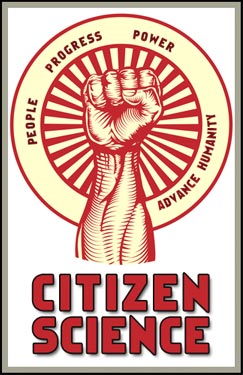 Believed to be the largest, or at least most ambitious citizen-science project in North Texas, Downwinders’ Wise County Ozone Project is going where no state or federal monitoring for smog has gone before: into the only DFW “non-attainment” county without an ozone monitor.
Believed to be the largest, or at least most ambitious citizen-science project in North Texas, Downwinders’ Wise County Ozone Project is going where no state or federal monitoring for smog has gone before: into the only DFW “non-attainment” county without an ozone monitor.
Wise County is where fracking was born and the gas industry still dominates many parts of it. It’s also where a lot of everyone else’s smog accumulates. Predominant southeast winds push it from the Gulf Coast all the way to Midlothian, through the metro DFW area, and into Wise County.
Based on past computer modeling by the State itself, ozone levels are often predicted to be higher in Wise County than any other 10 DFW non-attainment counties – but there’s still no State monitors there.
That gap in local public health information is intentional and it’s that gap the Wise County Ozone Project is filling.
Northeim is already drafting plans on how best to put the monitors to the test in the field. She wants us to have the ability to use them as stationary monitoring sites, as well as be able to take them with us on the road. It’s a complex and long-term mission that Northheim says she relishes. And she’ll be putting out the “Help Wanted” sign soon as she recruits other citizen scientists and volunteers to help, so stay tuned. You too can become a citizen scientist for the public interest.
Finding Kari was a real coup. But from its founding, Downwinders has had a long and distinguished history of working with great scientists and using sound science to advance the cause of cleaner air.
Dr. Marvin Legator’s 1996 report on the State’s toxicity classification system eventually led to some changes in Austin. Dr. Stuart Batterman did a landmark public health critique of the TXI hazardous waste burning permit in the late 1990’s. Dr. Al Armendarez, an engineering professor at SMU when he started out as Downwinder’s technical adviser, left in 2009 to become the first engineer ever to be appointed as Regional Administrator for EPA. In 2015, Dr. Kuruvilla John of UNT’s Physics Department used that school’s supercomputers to reproduce the state’s air modeling for DFW outside of Austin for the first time so elected officials could see what impact new pollution controls would have.
Soon-to-be Dr. Kari Northeim is the latest effort by Downwinders to develop local DFW expertise to help solve DFW air pollution problems. Please join us in welcoming her to the cause and consider signing-on to what is sure to be another historic challenge to the Status Quo.
Why Cement Kilns are Insatiable. And Why You Care.
 Dow, Hefty and Keep America Clean’s proposal to burn plastics via bright orange “energy bags” in cement kilns is new but the idea of using kilns as industrial kitchen dispose-alls is not.
Dow, Hefty and Keep America Clean’s proposal to burn plastics via bright orange “energy bags” in cement kilns is new but the idea of using kilns as industrial kitchen dispose-alls is not.
DFW has been identified as a national waste disposal destination because of its cement plants since at least the mid 1980’s. And as long as they continue to operate, the area will continue to be seen as a desirable dumping ground.
All these buildings, and roads, and “developments” have to be made out of something. They’re mostly made out of cement. In an area that’s grown by a Tyler or Richardson a year since 1970, cement is as ubiquitous as the air in your lungs. You just take it for granted. But it comes from somewhere and it gets made someplace.
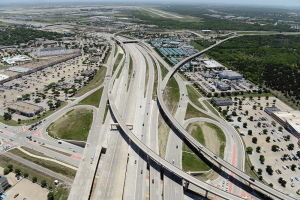
Brought to you by…Cement!
In our case, that place is here – right over there, in Midlothian, just a couple of miles across the Dallas and Tarrant County lines to the south. You know, the direction the wind blows from most of the time.
And its a big place. There’s a Chamber of Commerce sign in downtown Midlothian proclaiming the town the “Cement Capitol of Texas.” There are three large cement plants – TXI, Ash Grove and Holcim – that quarry the limestone rock they need from the escarpment that runs north-south along I-35 for most of the length of the state. But the sign is too modest. Befitting one of the fastest growing areas in the country, it’s the largest concentration of cement manufacturing in the nation.
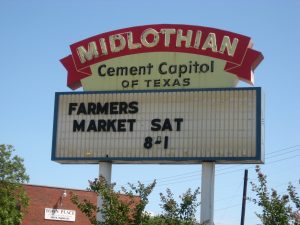
The Chamber of Commerce sign in downtown Midlothian
These aren’t batch plants. Think coal plants. Smokestacks hundreds of feet high. Furnaces, or kilns, as long as football fields. In 2015, the three plants released 475 tons of Particulate Matter pollution, 2040 tons of Sulfur Dioxide, and 510 tons of Volatile Organic Compounds – more pollution than the totals from entire North Texas counties.
That pollution goes somewhere. Depending on where you live, some of it lands in your lungs.
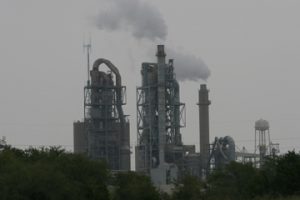
Holcim – one of three Midlothian cement plants
All three cement plants are in Midlothian to mine the limestone rock just like coal plants would strip-mine coal. Midlothian has a lot of cement kilns because that’s where the raw material for cement is, not because of any other reason.
But unlike coal, the limestone isn’t flammable and for there to be cement, the kilns must reach and maintain a flame of at least 1700 degrees F to bake the limestone with other ingredients. This is the way cement has been made since Rome perfected the process two millennia ago. You bake rock…just so.
And that flame is your number one operating expense as a cement plant owner. It accounts for up to 40% the costs of doing business. Anything you can do to reduce the costs of that flame saves you money. And that equation is the basis of constant mischief in the industry.
When the first Midlothian cement plant opened in 1960, and when the second one opened in 1965, the rock was baked with fire fueled by Texas natural gas. By the time the third cement plant opened in the mid-1980’s , the first couple of “energy crisis” had hit and they all three begun to burn cheaper coal.
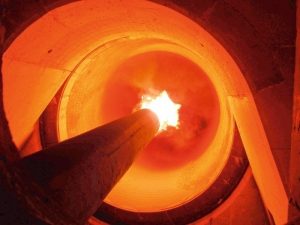
The lance of the flame inside a cement kiln, or furnace
But another trend started in the 1980’s. Two of the three cement plants took advantage of a loophole in a new federal law and began burning hazardous wastes to bake their limestone rock.
Unlike gas and coal, the cement plants were paid by hazardous waste generators and middlemen to burn these wastes, so the plants not only saved the cost of buying fuel, they actually profited from becoming incinerators, and labeling waste as “fuel.” Hazardous waste burning at U.S. cement plants peaked in the 1990’s.

Air computer model of where the smog pollution from all three Midlothian cement plants goes during a typical year
Even after many cement plants have stopped burning hazardous wastes, they continue to burn “industrial wastes” like used oil, tires and shredded car interiors. When burned in kilns, these waste often produce exactly the same toxic air pollution as hazardous wastes. That’s what’s happening in Midlothian now. Although decades of citizen action have modernized the equipment and stopped the burning of official hazardous waste, the three cement plants continue to burn a wide variety of materials, and the pollution continues to blow wherever the wind takes it.
As long as there’s limestone to be mined, the cement plants will remain open in Midlothian. As long as they stay open in Midlothian, they’re going to try to burn all kinds of wastes. When they do, they release a lot of toxic air pollution. And as long as the wind patterns stay the same that means that seven million DFW residents will be exposed to that toxic air pollution.
And that’s the reason why DFW is always just one multinational decision away from being downwind of a huge hazardous waste incinerator again, or a municipal waste incinerator, or a medical waste incinerator: Because we’re already downwind of the three hungry cement plants that need to burn any and everything they can get their hands on, the cheaper the better. And if they can get paid to throw things in the fire, well that’s a business formula they can get behind. As long as they need to feed their flames, they’re out combing the streets for things to burn – including “hard to burn plastics” for an industry that needs its own greenwashing cover story.
Until the manufacturing of cement no longer demands a sun-hot flame, or they run out of limestone rock, the Midlothian cement plants pose pose a huge on-going air pollution threat. The Dow project to burn plastics is just the latest, but not last, chapter. That’s why as long as there’s cement being made here, there also needs to be vigilant downwinders.
DFW EJ Issues Get Some Muscle

New Attorneys and Paralegals Give Citizens Options
We know things look bleak right now. There are few bright spots. You wonder if every new possible small light you see is the end of the tunnel…or another train about to run you over.
Which makes what’s happening at the North Texas Legal Aid offices remarkable and worth knowing about.
For the first time in anyone’s memory, there are two attorneys, and at least that many paralegals, specifically dedicated to providing “free legal services, advocacy, and community education to individuals, community groups, and non-profit organizations” working on Environmental Justice issues.
And not just Environmental Justice. Fair and affordable housing, as well as more democratic and equitable community development now have many more local advocates than they did just a few months ago.
In essence, DFW citizens just got their own legal defense fund amped up to 11.
Legal Aid is an independent federal nonprofit established by Congress in 1974 to provide financial support for civil legal aid to low-income Americans. As long as you meet the agency’s income criteria, you have access to free legal services and resources (income up to 125% of the U.S. poverty line. In certain cases up to 200%). Both Dallas and Fort Worth have had under-staffed, under-budgeted offices for years, but still managed to do good work.
Representing rural residents of “Cement Valley,” a Dallas Legal Services lawyer, Robert Doggett, was co-counsel in Downwinders’ fight against the TXI hazardous-waste burning permit throughout the 1990’s. But that kind of direct participation in a high-profile environmental fight has been rare. These fresh hires are looking to change that.
As part of the newly-funded “Community Revitalization Project,” these attorneys will be providing “assistance and education to communities and individuals on how to use the law to ensure fair treatment and meaningful involvement of all people—regardless of race, color, national origin, or income—with respect to the government’s development and implementation of environmental policies, as well as the enforcement of environmental laws and regulations against polluters. The objective of CRP is to help ensure that all communities provide the opportunity for residents to live in a clean and healthy environment.”
In addition, staff will also assist “individuals and communities in developing and maintaining affordable housing, fighting housing discrimination and other illegal housing practices, and meaningfully participating in the development and implementation of policies that affect their neighborhoods. The goal is to help ensure that individuals and communities have equal access to affordable, accessible, and safe housing.” They’ll help to “educate citizens about their right to offer meaningful input on matters affecting their communities. CRP also works with communities to advocate for economic justice, develop fair access to transportation, fight predatory lending practices, and address systemic inequalities commonly found in low-income communities.”
 New lawyers from the Project are landing in other major Texas cities as well. There’s potential to do a lot of good here.
New lawyers from the Project are landing in other major Texas cities as well. There’s potential to do a lot of good here.
Moreover, the budgets for these new positions are not subject to Presidential, Congressional or state political tantrums. They’re funded for at least the next four years with money from a multi-million dollar settlement from “legal claims arising from mortgage-related activities by Bank of America and its subsidiaries.”
The monies are distributed by a third party, the Texas Access to Justice Foundation. They can’t be messed with. There’s hope of making the Project’s positions and mission permanent after the settlement money runs its course.
The result is a palpable shift in power. While it’s not close to matching the firepower of a government agency legal department or a polluter’s white shoe legal team, the presence of the the Legal Services effort in town means North Texas residents now have access to an extraordinary network of legal help they didn’t have just a few months ago.
And if our own organizational history tells us anything, it’s that a determined critical mass can make a huge difference against much larger and more powerful opponent.
Tulane graduate Matthew Miller is the Legal Service’s Project’s point person in DFW. His email is: millerm@lanwt.org
Don’t be shy. Use your imagination. It doesn’t have have to be a lawsuit. It can be as simple as a Open Records Act request, or sitting in on a meeting with officials. They want to be our legal counsel. Let’s make effective use of this new tool.
HEFTY! HEFTY! HEFTY! is TOXIC! TOXIC! TOXIC!
Anti-Litter Group “Keep America Beautiful” Teams-Up with Dow and Hefty to Burn Plastic Bags Full of Plastic Garbage in Cement Kilns
And They Want To Do It Here…
We’ve been warning you for a while that garbage burning was coming to North Texas one way or another.
What we didn’t anticipate was that “Keep America Beautiful” would bring it.
That’s right. The same group that gave you Oscar “Iron Eyes” Cody crying over litter is now prepared to make your own eyes water and sting from the air pollution it wants to encourage by burning municipal solid waste, especially “hard-to-recycle” plastics.
Touting bright orange “energy bags” as a quick and easy alternative to throwing those plastics away, a news release issued by the Keep America Beautiful folks, your friends at Dow Chemical, and Reynolds, the makers of “Hefty” trash bags, claims they’re “a convenient way to collect plastic materials that would otherwise end up in the landfill and offers a platform to promote positive behaviors to prevent this material from being wasted.”
What they don’t tout as much is their alternative to throwing these plastics into a landfill – throwing them into a furnace.
As long as cement kilns need a high-temperature flame to make their product, they have large energy costs. Typically, 30% or more of the costs of running a cement plant is in buying the flammable materials necessary to keep that flame lit.
 History has taught us that cement kiln operators will burn anything, including the kitchen sink, if they think it will help reduce those high fuel costs.
History has taught us that cement kiln operators will burn anything, including the kitchen sink, if they think it will help reduce those high fuel costs.
Kiln flames in Texas used to be powered by natural gas exclusively. Then it was coal. Then it was hazardous waste and coal. Then industrial wastes. And now municipal solid wastes. In bright orange plastic bags.
Cement plants don’t have to pay for the wastes, now termed “fuel,” for regulatory loophole purposes. In fact, because it’s now a “fuel,” they often get the waste for free or even get paid to burn it. It becomes a new center of profit in the company besides making cement. Maybe even more important. In the 1990’s, there were plenty of rumors about how the TXI cement plant in Midlothian would burn a lot of hazardous waste they got paid a handsome fee to take, but not have much cement product to show for it.
While garbage burning cement kilns have been on the rise in the developing world, the practice hasn’t caught on in the U.S.
Dow’s and Keep America Beautiful’s friendly neighborhood “Energy bags” are a way to jump start it.
This is already happening in Omaha, where 8,500 homes have filled 13,000 “Hefty Energy Bags” since the program’s launch in October. That’s resulted in more than 13,000 pounds of plastics being burned in a near-by Ash Grove cement kiln. They’re so excited about burning plastics at Keep America Beautiful that they’re not only endorsing the practice, they want to bring it to a cement kiln near you.
At a news conference to announce the offering of cash money grants to local communities who wanted to try the option, they unveiled a contiguous states map of the US where they’d like to see the “energy bag” concept implemented. The approximately 50 locations on the map identified by a red (not orange?) star are almost all sites adjacent to large cement plants – including Midlothian, immediately south of the Dallas and Tarrant Counties line, and home of the largest concentration of cement manufacturing in the nation.

Local candidates for eager participation in the project include TXI, the cement plant that burned hazardous waste by the thousands of tons from 1987 to 2008, Holcim, which has sought permits to burn carpet scraps and shingles, and Ash Grove, the same operator as the one burning Omaha’s plastic bags now.
BURNING PLASTIC IS BAD FOR PUBLIC HEALTH AND PUBLIC POLICY
1. It replaces real recycling with burning.
Once you have a hungry garbage burner, you have to keep feeding it with more and more garbage, decreasing the market for real recycling.
This is already happening with tires. There are good tire recycling programs that can’t stay afloat because local governments have promised the local cement kilns a certain volume every year.
2. It gives an incentive to the plastics industry keep to just making plastics that you can’t recycle.
Burning plastic garbage is like a relief valve on the growing piles of “hard to recycle” plastics that industry is producing. Just throw it in a bag and send it to the kiln. Out of sight, out of mind. There’s no question it reduces the percentage of plastics going to landfill…only to increase the percentage of plastic going into your lungs.
The real answer is to reduce and quit producing those “hard-to-recycle” plastics, not giving them a cheap way to get out of doing so.
3. Burning plastic produces lots of toxic air pollution – and all of DFW is downwind of Midlothian
Burning plastics produces toxic air pollution, a percentage of which escapes the smokestack and ends up in the air you breathe, the soil in your garden, and the food you eat and drink. Specifically, burning plastic creates lots of Dioxins and Furans – the same ingredients that made Agent Orange so toxic. The same poisons that made the State of Missouri evacuate the town of Times Beach in 1983.
Burning plastic also releases metals into the air, like cadmium and lead.
Other chemicals released while burning plastics include benzo(a)pyrene (BAP) and polyaromatic hydrocarbons (PAHs), which have both been shown to cause cancer. If plastic film or containers are contaminated with pesticides or other harmful substances, those will also be released into the air. If plastics are burned with other materials, whole new toxic chemicals may be created from the interaction of the different substances.
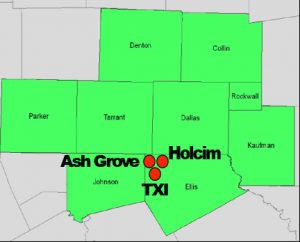
But wait! Don’t you want to divert more garbage from going to landfills?
Yes you do, but by eliminating, reducing and recycling the garbage – not taking a match to it.
Landfills are nasty things. They’re big and smelly and they leak. Sometimes they leak and contaminate ground and surface water. But these days you usually can trace the plume of those leaks and contain them before they get in drinking water.
On the other hand, once a piece of dioxin-contaminated soot is shot through a smokestack into the atmosphere, you have no idea where it’s going. You’re turning the whole sky into a landfill, full of solid and gaseous residues of refuse. What you didn’t want to drink, you’re now breathing. That’s the opposite of progress.
Taking a look at the Board of Directors for Keep America Beautiful, it’s no wonder they have a soft spot in their heart for large plastics manufacturers. They have not one, but two members from DOW, who, we are sure, thought this was a splendid idea.
Howard Ungerleider is Vice Chairman and Chief Financial Officer of Dow, and Greg Jozwiak is the Business President for the Elastomers and Electrical and Telecommunications businesses for the company. Prior to assuming his current role, he served as North America Commercial Vice President for the Packaging & Specialty Plastics business. Hmmmm.
But wait, there’s more! KAB has a board guaranteed to offend just about everyone. Not content with two Dow executives, it also has two Nestle Corporation members, a representative of Waste Management Inc., McDonalds, Keurig, Anheuser-Busch, and Phillip Morris – yes, that Phillip Morris.
“PEOPLE START POLLUTION. PEOPLE CAN STOP IT.”
Those are the words, spoken in a deep baritone by William “Cannon” Conrad, that ended that famous 1971 Keep America Beautiful commercial in honor of Earth Day. They ring as true now as then.
And so, people, we’re asking you to take action to discourage this kind of BAD IDEA from ever coming-up at a Keep America Beautiful board meeting again – send an email to their new Chair, Helen Lowman.
Ms. Lowman is a former FEMA and Peace Corps executive in the Obama Administration. She’s from Texas, worked at TCEQ, and graduated from Austin College…. So maybe messages from her fellow Texans will have more of an impact.

TAKE ACTION:
TELL KEEP AMERICA BEAUTIFUL’s NEW CHAIR YOU DON’T WANT TO BREATHE TOXIC AIR POLLUTION FORM BURNING PLASTICS
SEND AN EMAIL WITH JUST TWO CLICKS
And if you want to leave a public message for the group too, here’s the group’s FaceBook site.
Other citizens groups, including some national alliances and networks are gearing up to take on this latest proof that all wastes, no matter how toxic, roll downhill to cement kilns eventually.
Meanwhile, Downwinders is taking the lead and beginning the push back we hope buries this project in the bright orange trash heap of history. Join us in not just saying “No,” but “Hell No.” Send that email now and then find two other people that will do the same. Thanks.
And Now a Word From NOT our Sponsor

A note of explanation: There are two meetings next week in DFW concerning the large and complicated Volkswagen legal settlement over the company’s lying about the air pollution its diesel vehicles emit. Each state, as well as about 20 counties in Texas, are looking to score millions for various reasons and programs.
The two DFW meetings are sponsored by Public Citizen/Texas. We love Public Citizen and when they asked us to co-sponsor these meetings, we reflexively signed-up, even without knowing the details. There are efforts around the country to use this money to electrify school and city bus systems and challenge the status quo in interesting unconventional ways that might not be possible without large wads of cash.
But…what we didn’t know at the time we agreed to be co-sponsors was that the meeting is really a larger effort by something called the Texas Clean Air Working Group – an official statewide organization of local county governments working with other officials and businesses – to solicit comments…and most likely, direct the money to their priorities.
As a result, the North Texas Council of Governments is the major local coordinating entity for the Working Group. The COG will be presenting its version of a “DFW air quality update” and helping to coordinate responses. We did not know this until last Thursday, when we asked for details of who was doing what presentations.
This is problematic for Downwinders at Risk on a couple of fronts.
For one thing, NTCOG is one of the reasons DFW is STILL in violation of the Clean Air Act after 26 years. They have a perpetually overly optimistic perspective. They have a close relationship with TCEQ because they get so many grants from them, and they frequently side with the State on air quality issues. They see air pollution only thru the prism of federal transportation dollars at risk over our “non-attainment: status – not public health. In 2015 citizens had to raise money to do the DFW air computer modeling that neither TCEQ nor COG would do. You aren’t going to get a very realistic picture of DFW air quality, or the need to do more about it, from a COG presentation.
Secondly, the preferred use of the VW settlement money by many of these local governments and NTCOG is either expansion or replacement of their own natural gas fleets, or supplementing existing state programs the state legislature has refused to adequately fund, like the Texas Emissions Reduction Program (TERP). In effect the goal of most of the members of the Working Group is to reinforce the status quo, not change it.
Because of these reasons, we’ve asked to be taken off the list of co-sponsors. We don’t feel comfortable with our name being used to promote a more rose-color than-real picture of DFW air pollution. or natural gas as the solution to that not-as-bad-as-it looks problem.
The suggestions made at these meetings will be channeled through the NTCOG, who has already given the state a quote for the amount of money it wants and a list of what it wants to spend it on. There is no citizens lobby being organized separately to argue for different priorities.
Looming over all of this is the fact that the Texas Commission on Environmental Quality and/or the Governor’s office determines where the state’s part of the settlement goes. So don’t expect much. In fact, Ken Paxton, the Texas Attorney General is suing over the settlement, specifically trying to eliminate the $2 billion set-aside for “zero-emissions” vehicle development as “unconstitutional.”
Paxton is also suing to get 20 Texas counties, including almost all the major urban areas, to drop their own VW suits. Why would the counties want that money? Because they don’t trust the state to spend it on improving air quality. Dallas County Commissioners Court sent the state the same message this last month when it voted to stop collecting the $6 inspection fee the state is supposed to be reimbursing to local governments for air quality programs, but instead is just sitting in the general revenue pile to cover-up cuts in other programs.
So even while local governments in Texas are already lobbying hard to get their share of money from Austin, Austin is trying to make their pool of money smaller and eliminate zero emissions vehicle funding all together. Cross-purposes? Yep. But that’s Texas government in 2017.
New Harvard Study: There is No “Safe Level” of Exposure to Smog or Particulate Matter
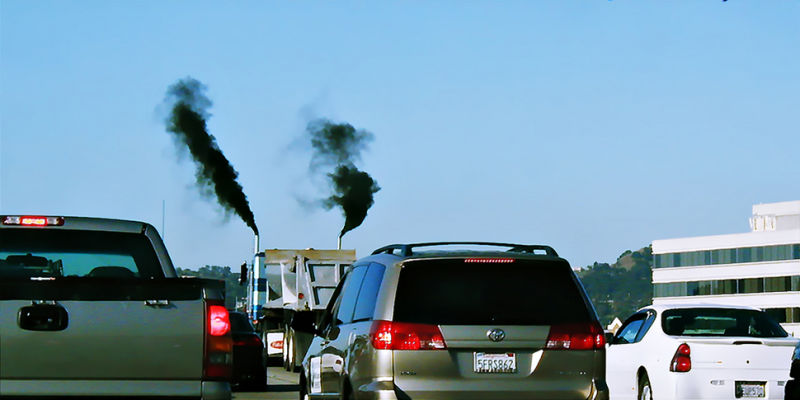
Air pollution kills thousands of Americans every year, even at levels far below the current legal limits set by the Environmental Protection Agency.
That’s the conclusion of the largest study of its kind ever done, performed by the Harvard School of Public Health and published last Thursday in the New England Journal of Medicine. It comes only a month after the Trump Administration signaled a willingness to roll back those current limits.
“Air Pollution and Mortality in the Medicare Population,” has six authors headed up by well-known Epidemiologist Joel Schwartz, of the T.H. Chan Harvard School of Public Health.
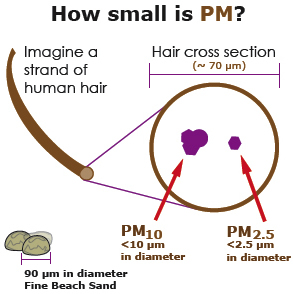
Researchers could find no sign of a “safe level” of exposure to either Ozone, aka Smog, or Particulate Matter 2.5, aka Soot at a microscopic level.
For every 1 microgram per cubic meter (µg/m³) reduction in Particulate Matter pollution, 12,000 lives were saved annually. For every 1 ppb of ozone reduction, 1,900 deaths were prevented.
Previous studies have concluded the same thing, but this new one stands out for a variety of reasons:
Size: The study followed over 61 million American seniors in the lower 48 contiguous states, representing 97% of all Americans 65 or older, for 13 consecutive years, 2000 to 2012, totaling 420 million “person-years” of follow-up and analysis.
Accuracy: Researchers developed an entirely new computer model to do the study, combining on-the ground air-monitoring data and satellite-based measurements to estimate pollution levels across the continental U.S at a resolution of 1-square-kilometer. Most current air computer models, including the ones used to predict DFW smog levels, run at a level of 5 to 10 kilometers square.
Telescoping in at the local level gave the authors the ability to estimate the levels of smog and ozone level exposures to seniors by Zip Code.
Scope: Unlike previous studies, this one’s ability to get down to the community level meant it could look at rural areas never included before. It’s size also “allowed for unprecedented accuracy in the estimation of risks among racial minorities and disadvantaged sub-groups.”
Men, Blacks, Asians, Latinos, and lower-income seniors all faced increased risk of death from exposure to Particulate Matter. Black seniors were three times more likely to die from PM exposure as the senior population as a whole.
Since the Clean Air Act (still) requires the EPA to set air quality standards that “protect sensitive populations,” a number of Environmental Justice issues, and lawsuits, might arise from the study’s findings.
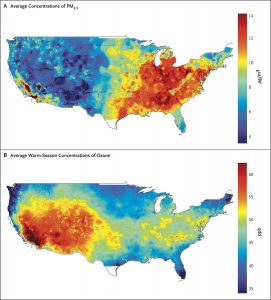
Extremely Low Levels of Pollution: With Particulate Matter, the study saw a significant increase in the risk of death rise when seniors were exposed to as little as 5 micrograms per cubic meter (µg/m³), the lowest level measured. The current EPA standard for PM exposure is 12 µg/m³. Ozone levels as low as 30 parts per billion, also the lowest measured, increased the risk of death as well. The current standard is 75 ppb, with a planned phase-in to a 70 ppb level approved by the Obama Administration in 2015 now seriously in doubt.
Seniors’ chances of dying decreased every time PM levels were decreased. However, in a strange indicator of just how harmful lower levels of pollution are, their chances of dying decreased more when those PM levels decreased BELOW the current standard of 12 µg/m³. That is, more lives were saved by cutting PM levels back from 12 to 5 µg/m³ than from say, 17 to 12 µg/m³.
PM and ozone both are primarily caused by combustion – whether it’s from engines in cars and trucks, furnaces in power plants and cement kilns, or diesels running gas and oil pipeline compressors or locomotives.
DFW’s current annual average for ozone is 80 ppb with a new 2017 average due after ozone season is completed in October. Our annual
DFW annual PM levels have averaged anywhere from 8 to almost 12 but we’ve gone over the 12 µg/m³ annual standard a number of days every year. In this 2013 study both Fort Worth and Dallas had almost 80 days above the national annual standard.
Despite its impressive size and scope, the study gives only a partial view of the public heath damage done by air pollution.
It only looks at the impacts on those 65 and older. Left out of its analysis are children, whose lungs are more sensitive because they’re not fully developed, and everyone under 65 with COPD, asthma, or other existing respiratory/cardiovascular conditions that would be exacerbated by bad air.
It also leaves out any impact short of death. This is especially important when it comes to PM pollution, which has now been linked to a number of neurological diseases like Parkinson’s, Dementia, and Autism, as well as to infertility and immune system damage. Ozone exposure can cause strokes, non-fatal heart attacks, and asthma emergencies. None of these potentially disabling results that fall short of dying are included in the damage assessment of this new study.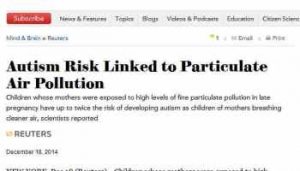
At a time when the current EPA is seeking every opportunity to roll back, cut back and turn back, this study is a large, unprecedented reminder that the current standards themselves are not protecting public health. Not even close.
Citizens must begin to fight for their lungs by reducing the exposure levels across the board, no matter the regulatory status of the pollutant, or compliance of the source. There is no safe level of industrial crap to breathe.
That means more than anti-idling zones at schools.
California has a recommended buffer zone of 500 to 1000 feet from major freeway corridors for new schools. Dallas -Forth Worth municipalities should expand this idea to daycare centers, parks and senior centers, and solidify it into policy instead of just recommendation.
Mitigation measures along those corridor using recycled water walls to “rain” down the particulate matter from traffic, or retrofitting sophisticated new air filters in homes and apartments for citizens are also needed to help those who cannot simply move away from the problem yet.
Portable monitors should be bought and distributed to help identify local PM hotspots and catch bad actors or work to lower levels of pollution. The DFW Air Research Consortium’s regional grid of sensors could be used to track PM plumes in real time.
It’s clear we’ll get no help from Austin or Washington with these efforts. Indeed, progress will be made despite them. If we have a TCEQ and EPA only interested in pollution promotion, we must fight for more pollution protection ourselves in the places where we live.
Is that a Disco Ball, or is Your Photoluminescence Experiment Just Glad to See Me?
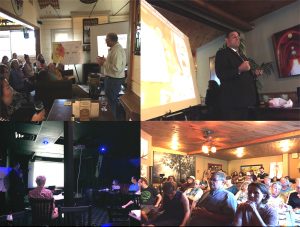
Downwinders’s “Evenings of Science and Socializing”
Concludes with SRO Crowd in Denton
We’re pretty sure it was the first time Cambridge-trained UTD Physicist Dr. David Lary had presented in a bar.
The occasion was opening night of Downwinders’ “Evenings of Science and Socializing” at Bryan Street Tavern, in a dark back room that came complete with fog machine, disco ball, and a too-close juke box.
But Dr. Lary is nothing if not persistent. He’s applied for one grant after another in trying to fund his dream of a regional grid of hundreds or thousands of air monitoring sensors. He was told not to even bother applying for a prestigious National Science Foundation grant. That would be the same grant he and his consortium of colleges, cities, and citizens groups are now in the running for. That kind of persistence is why he’s an honorary Downwinder.
And so, like the trooper he is, Dr. Lary pushed through all the distractions and pitched his plan to an audience of about a dozen and half, including wayward bar patrons who stumbled onto the exhibit and stuffed $5 dollar bills into the donation jar.
Four nights later it was Dr. David Sterling of the UNT Health Science Center explaining how his school’s partnering with the Fort Worth League of Neighborhoods gave birth to the design of the portal used by the public to access the monitoring information. His talk drew about two dozen citizens to the Ginger Man pub, including many that had been directly involved in the focus groups he had sponsored over the past five years.
And two nights after that, Dr. Lary and UNTHSC Environmental Health doctoral candidate Leslie Allsop showed up at the Greenhouse in Denton with a Standing Room Only crowd of at least 40-50 folks, plus a few latecomers who were turned away.
Some of the audience questions were the same at every meeting. How much do the sensors cost? How do we get one or more of them? Some were particular to the location or audience being addressed, like why is Denton always the “worst-performing monitor” in North Texas? Answer: location, location, location.
All of these meetings were the first time the general public had been invited to look at the technology and plans of the DFW Air Research Consortium, (DFW ARC) the less-than-year old group that’s gaining momentum in its quest to use high tech solutions to decades-old problems. Downwinders has been instrumental in establishing and administering the group. It includes the cities of Dallas, Fort Worth, Plano, the School Districts of those cities plus Richardson and the Dallas County Community College system, TCU, UTA, UNT and UTD, plus Livable Arlington and Mansfield Gas Well Awareness.
 News of the National Science Foundation grant the Consortium applied for should be coming any day now. Considering the competition, it would be quite incredible if the Consortium won. It would generate much needed publicity and increase our chances for getting other grants. But regardless, the work that went into the NSF grant has produced a template for the Consortium to apply to other foundations and individuals to grow the same regional grid of sensors. The work won’t stop if the NSF money doesn’t come through.
News of the National Science Foundation grant the Consortium applied for should be coming any day now. Considering the competition, it would be quite incredible if the Consortium won. It would generate much needed publicity and increase our chances for getting other grants. But regardless, the work that went into the NSF grant has produced a template for the Consortium to apply to other foundations and individuals to grow the same regional grid of sensors. The work won’t stop if the NSF money doesn’t come through.
Proof of that are two on-going projects of the Consortium and its members that are already up and running.
The “10-Schools” project at UTD is one where a select number of schools across the Metromess will be paired with Particulate Matter and Ozone monitors in the first attempt to sketch out the frame of a regional grid system. Selection of the schools is being weighed right now. At every meeting there was a suggestion from citizens for this or that school that should be included based on its proximity to a large pollution source, or high absentee rates. It will be tough to narrow all those suggestions down to ten.

In the Fall, the project will be distributing the monitors, being assembled now at Dr. Lary’s lab at UTD. They’ll come with a video camera, a micro meteorology unit, and the pollution sensors themselves. Students will be able to use the monitors as a tool in classes. Neighborhoods will be able to use the information to better protect themselves. It will be the beginning of building a regional grid that identifies and tracks air pollution much better than the state or EPA does now.
Then there’s Downwinder’s own “Wise County Ozone Project,” that will use the two brand new portable ozone monitors we just bought to begin recording smog levels in the one and only county in the “DFW Non-Attainment Area” that doesn’t have any. We have at least one location secured for a stationary monitor, but we need some additional assistance. To pull this off, we need:
– Carpenters that can help us assemble a couple of 12-13 foot wooden platforms that will house the monitors.
– Solar expertise and panels to help power the monitors.
– Electrical Engineers that can help us hard wire the monitors to those panels and back-up batteries.
– IT experts who can help us with connectivity issues.
If you or someone you know could be of help in any of these categories, please write us at Info@downwindersatrisk@gmail.com or call us at 469-608-1972.

What these two projects prove is the technology featured in all three of our recent events is here now and being used. We don’t have to wait. We just have to organize ourselves to make effective use of it. Help us do that. With your expertise if you have it. With your time if you can spare any. With a contribution if you can.
There are many things you may feel powerless to change right now but this is a “bricks and mortar” change on the ground that can take place over the next few years and promises to deliver a challenge to both Austin and DC. Become a part of it.
Thanks to Dr. Lary, Dr. Sterling and Ms. Allsop for donating their time and taking on the challenge of bringing science to the public..and pubs. Thanks to our co-sponsors: The Dallas Innovation Alliance, the Fort Worth League of Neighborhoods, and the Denton Drilling Awareness Group. And thanks to everyone who showed up and made these events more useful to citizens. Onward thru the Smog.
How Fort Worth Neighborhoods Helped Birth a High-Tech Regional Air Monitoring Network
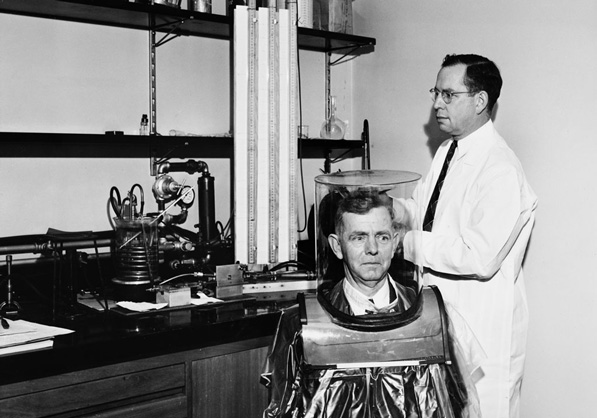
“An Evening of Science and Socializing”
Monday, June 22nd
7- 9 pm
The Ginger Man
3715 Camp Bowie
Featured Guest: Dr. David Sterling, Professor of Biostatistics and Epidemiology,
University of North Texas Health Science Center
Co-Sponsored by the Fort Worth League of Neighborhoods
They approached the leadership of the Fort Worth League of Neighborhoods, an umbrella organization of 350 neighborhood associations, about establishing a series of focus groups on the issue. The League agreed.
Those focus groups have provided us with the most thorough knowledge about community attitudes toward air quality in DFW that we’ve ever had, and directly influenced the bottom-up design of a new high-tech sensor network for air quality.
Leading those focus groups were UNTHSC Professor Dr. David Sterling and Doctoral candidate Leslie Allsop. Dr. Sterling is our featured guest tonight in Fort Worth at The Ginger Man for our second “Evening of Science and Socializing.” Ms. Allsop will be at our third and last event in Denton with Dr. David Lary on Wednesday night.
Residents in Sterling and Alsopp’s neighborhood focus groups voiced a high level of concern regarding air pollution and what they saw as the sources of it, including vehicles, fracking, and cement plants.
Participants also expressed a severe distrust of current information. They didn’t see the information available through government and media sources as being relevant to their neighborhood, or adequate to address their questions about specific emission sources.

Specifically:
• Participant’s perceptions of air quality was overwhelmingly negative, and available information was seen as being biased or unreliable.
• Within the socio-ecologic model, the primary impacts of air quality were perceived as greatest at the individual/neighborhood level.
• The ability to influence air quality at the individual/neighborhood level were perceived as negligible.
• Influencers were seen as residing at the policy and community level, but limited benefit at individual/neighborhood levels were perceived to occur.
Recognize any of these reactions? Concerned, but feeling powerless to affect the status quo.
How do you overcome this attitude? You build your own air quality monitoring network. One that’s independent of the government. One that citizens help design. One that allows you to feed information into it, as well as get much better information from it.
That’s the alternative system the DFW Air Research Consortium, including the UNTHSC researchers, is constructing from scratch.
Besides the disbursement of small e-sensors over the entire region that combine to give you a “weather map” of air pollution in real-time, one of the most distinct features of the Consortium’s new system is a digital dashboard that can collect the information a resident inputs into it.
Say you’re having a bad air day. Your eyes are watering. You have breathing problems. You check those boxes on the dashboard. The next time those conditions are forming, the dashboard will warn you. That’s the micro level.
But it will also take note of everyone else’s symptoms that were entered as well. If lots of people were also having a bad air day, it will tell you. And if people are experiencing health effects at certain levels, you’ll be able to see that in a very direct correlation. In this way citizens themselves are their own epidemiologists, with the possibility of establishing symptoms at levels of exposure to pollutants not yet linked in the literature. That’s the meta level.
All of this interactivity between user and app is traceable back to the UNTHSC’s focus groups starting four year ago. Fort Worth residents are responsible for helping to design the software to be paired with the Consortium’s sensor hardware.
Tonight in Fort Worth, UNTHSC’s Dr. Sterling gives an update about where his research has taken him and Ms. Allsop, including being in the running for a $3 million National Science Foundation grant with the rest of the Air Research Consortium. The competition includes the Argonne National Laboratory.
Libby Willis, President of the League of Neighborhoods when the research started will be there as well representing the residents who are responsible for so much of the direction of the current Project.
Besides the larger NSF grant awaiting a decision, two active citizen sensor projects already going on will also be discussed: Downwinders’ own Wise County Ozone Project and a grant that will allow the pairing of 10 sensors with ten DFW schools.
You don’t have to wait until 2018 to resist the anti-environmental agenda so in vogue in Austin and Washington. You can help build an alternative now.

